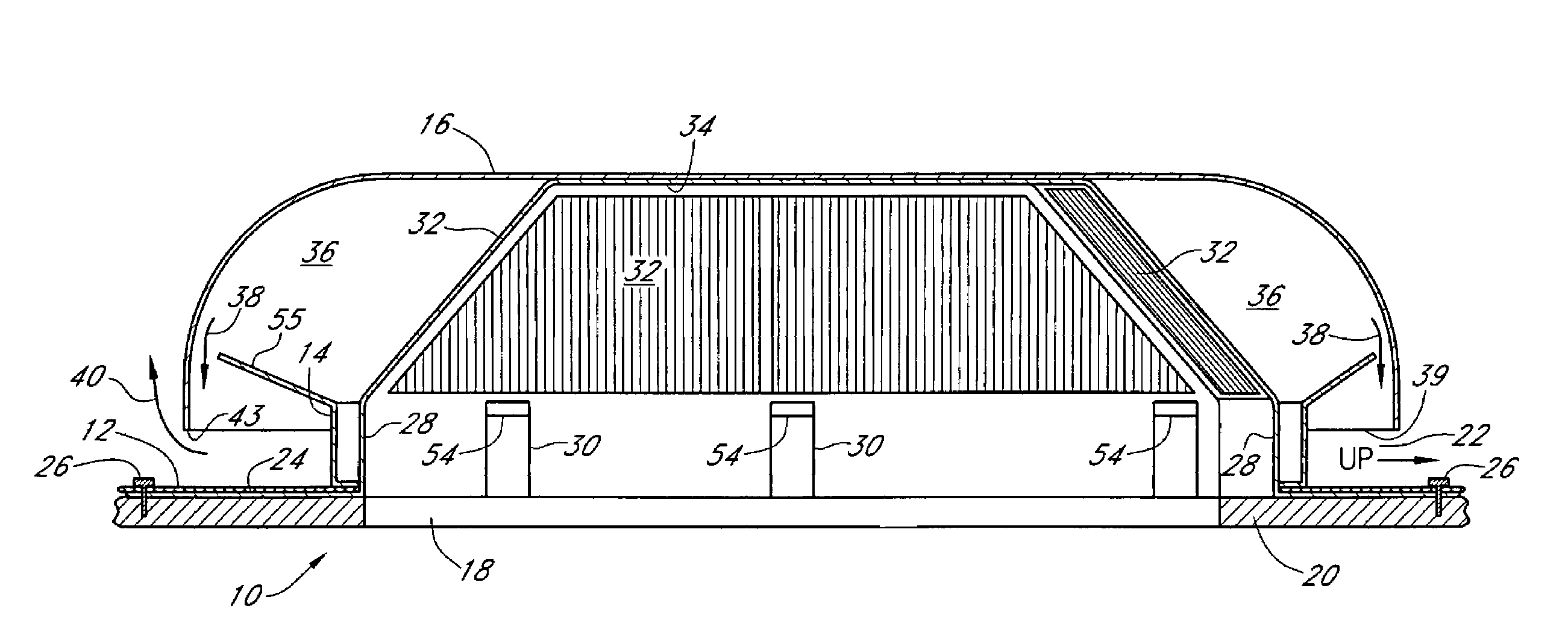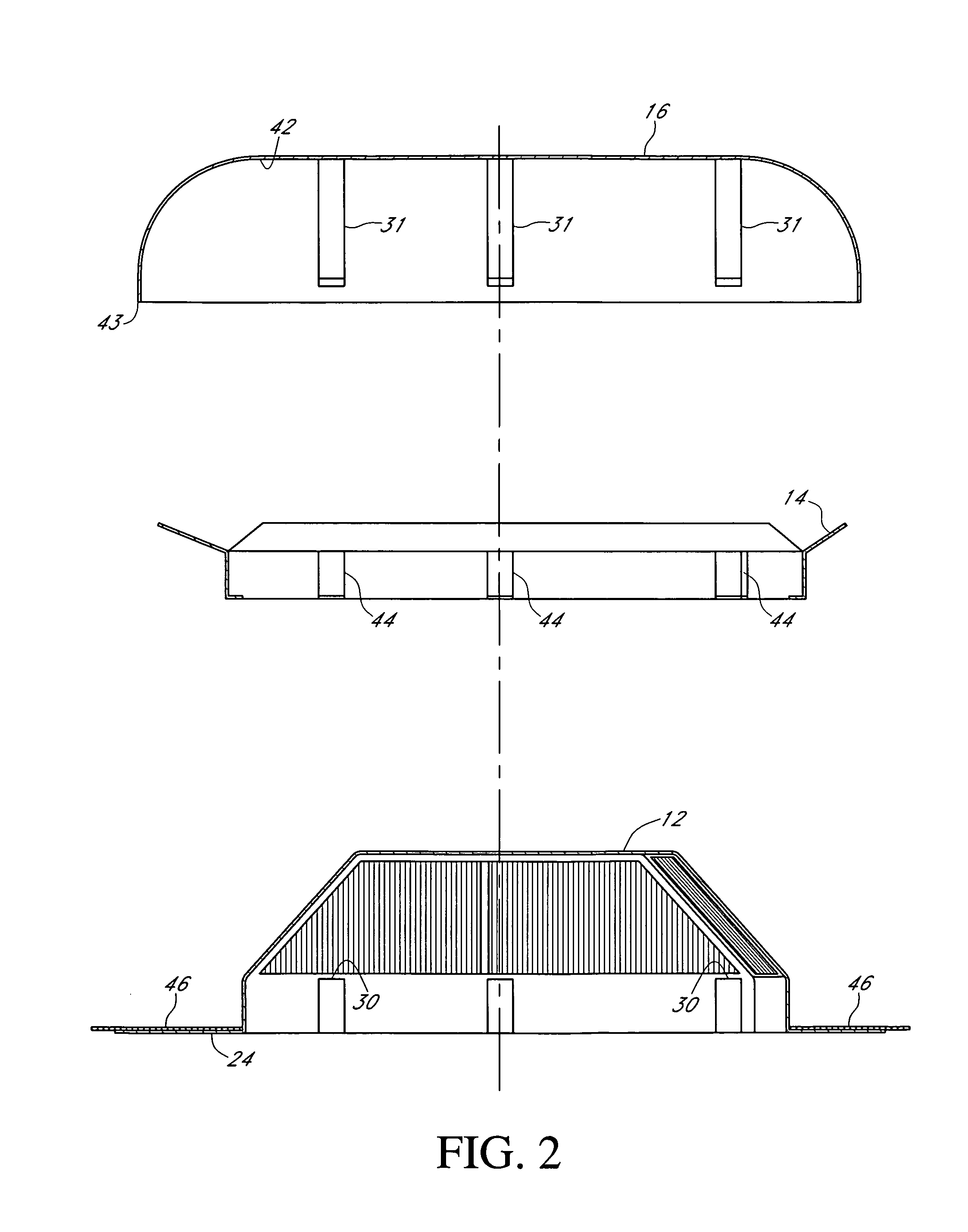Attic Vent
a venting and attic technology, applied in ventilation systems, lighting and heating apparatus, heating types, etc., can solve the problems of raindrops hitting the device, bouncing up under the cap, and affecting the ventilation effect,
- Summary
- Abstract
- Description
- Claims
- Application Information
AI Technical Summary
Benefits of technology
Problems solved by technology
Method used
Image
Examples
Embodiment Construction
[0028]Referring first to FIGS. 1 and 2, there is shown a section view of the passive vent 10 of this invention in an assembled condition (FIG. 1) and in an exploded view (FIG. 2). The vent 10 comprises primarily a bottom base component 12, an intermediate diverter component 14, and a top, dome-shaped component 16. The entire vent, once installed, fits in a water-tight seal over an opening 18 in a roof 20, such as for example over an attic or other similar enclosure which requires venting. If the vent 10 is installed on a sloping roof, such as is common on a residence, then the vent 10 includes a preferred orientation so that a particular portion of the vent is directed up the slope of the roof, as indicated by a legend marker 22, which is preferably molded into the base component 12 to assist an installer in properly orienting the vent 10.
[0029]The base component 12 includes a wide, flat mounting plate or flange 24. The mounting plate 24 extends beyond the dome-shaped component 16 s...
PUM
 Login to View More
Login to View More Abstract
Description
Claims
Application Information
 Login to View More
Login to View More - R&D
- Intellectual Property
- Life Sciences
- Materials
- Tech Scout
- Unparalleled Data Quality
- Higher Quality Content
- 60% Fewer Hallucinations
Browse by: Latest US Patents, China's latest patents, Technical Efficacy Thesaurus, Application Domain, Technology Topic, Popular Technical Reports.
© 2025 PatSnap. All rights reserved.Legal|Privacy policy|Modern Slavery Act Transparency Statement|Sitemap|About US| Contact US: help@patsnap.com



